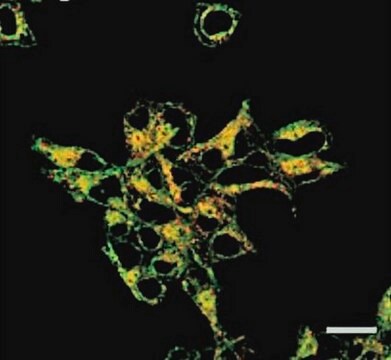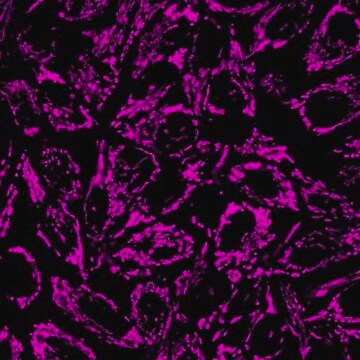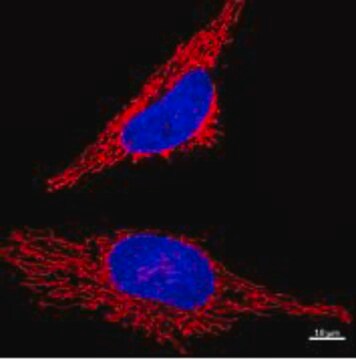SCT262
BioTracker™ Mitochondrial FerroGreen Live Cell Probe
Human
Sinônimo(s):
mitochondrial iron live cell probe, mitochondrial iron probe
About This Item
Produtos recomendados
product name
BioTracker™ Mitochondrial FerroGreen Live Cell Probe,
fonte biológica
human
Nível de qualidade
embalagem
vial of 100 μg
fabricante/nome comercial
Millipore
técnica(s)
cell culture | stem cell: suitable
flow cytometry: suitable
Condições de expedição
2-8°C
temperatura de armazenamento
2-8°C
Descrição geral
Características e benefícios
Descrição-alvo
Armazenamento e estabilidade
Outras notas
Informações legais
Exoneração de responsabilidade
Código de classe de armazenamento
11 - Combustible Solids
Classe de risco de água (WGK)
WGK 3
Ponto de fulgor (°F)
Not applicable
Ponto de fulgor (°C)
Not applicable
Certificados de análise (COA)
Busque Certificados de análise (COA) digitando o Número do Lote do produto. Os números de lote e remessa podem ser encontrados no rótulo de um produto após a palavra “Lot” ou “Batch”.
Já possui este produto?
Encontre a documentação dos produtos que você adquiriu recentemente na biblioteca de documentos.
Nossa equipe de cientistas tem experiência em todas as áreas de pesquisa, incluindo Life Sciences, ciência de materiais, síntese química, cromatografia, química analítica e muitas outras.
Entre em contato com a assistência técnica








